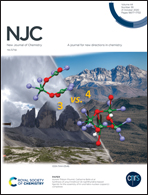Chlorophyll-catalyzed photochemical regioselective coumarin C–H arylation with diazonium salts†
Abstract
This communication describes the development of a mild method for the cross-coupling of the C3-position of coumarin with an array of diazonium salts mediated by chlorophyll as a biocatalyst via visible light catalysis. A natural pigment such as chlorophyll is used as a green photosensitizer and environmentally benign catalyst. This general and easy procedure provides a transition-metal-free alternative for the formation of 3-aryl coumarin derivatives at room temperature with good to excellent yields.



 Please wait while we load your content...
Please wait while we load your content...